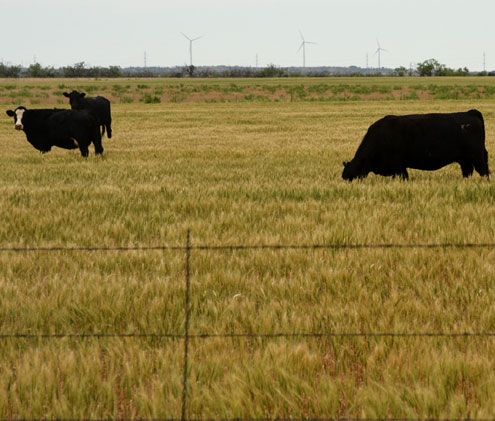COLLEGE STATION – Low wheat prices likely mean planted acreage around the state will remain static or drop slightly, said a Texas A&M AgriLife Extension Service specialist.
Dr. Clark Neely, AgriLife Extension state small grains specialist in College Station, said wheat producers globally were expected to provide an overabundance of the commodity, which should keep prices low for the foreseeable future.
“It’s tough to make money in wheat right now,” Neely said. “Until someone has a natural disaster or the other producing regions of the world begin cutting back acreage, it’s likely that we won’t see prices improve.”
Texas producers planted 4.7 million acres of wheat for grain production and grazing last year, Neely said. It was the lowest planted acreage for the state since 1973.
In 2017, U.S. wheat producers were on track to plant the fewest acres since the U.S. Department of Agriculture began keeping records in 1919, he said. Meanwhile, Russia, the second-largest wheat producing region of the world, is anticipating excess wheat production.
The price of cash wheat in Texas remains around $3.71 per bushel compared to $6-$7 per bushel in 2014, Neely said. He suspects some producers will forgo planting acres because the break-even price is around $5-$5.50 per bushel.
In some cases, producers may try to cut back on input costs to make the crop pencil out,” he said. “We’ve already seen a significant migration of wheat acres over to cotton. In other cases, delayed cotton planting could mean producers may fail to have enough time to transition from cotton to wheat in the fall.

Neely said most of the state is reporting good subsoil moisture, and producers in the Rolling and High Plains regions are hoping for rain to improve topsoil conditions before planting acres for grazing.
Producers should be preparing to plant or already planting wheat for grazing, he said. Grain wheat planting should get underway in the High Plains by mid-October and wind up in South Texas by mid-December.
“They’re just getting started in the High Plains, and most of the state has good, deep soil moisture,” he said. “They just need a little rain to get the plants up and going in dryland fields.”
How producers utilize wheat amid low prices will depend on the weather and operational margins, he said.
“Planting for fall grazing is often opportunistic,” he said. “If there is moisture in the next 10 days, you’ll see more acres planted for fall grazing. Harvested acres depends on conditions as well. If there’s a dry spring, you may see more acres grazed out rather than taken to grain if producers feel grain yield potentials are low. In some cases, producers will plant winter wheat for the sole purpose of a cover crop in a cotton rotation.”
Neely said producers’ decision to cut back on input costs could penalize them at the market. Last year, some producers were docked for low protein content as a result of inadequate fertilization and average or above-average yields from favorable rainfall.
Above-average summer rains in the High Plains could mean additional weed problems for wheat producers, Neely said.
“Not only does this add to input costs with additional tillage or herbicide, but producers should watch out for volunteer wheat,” he said. “Wheat streak mosaic virus was a problem last year in the region and could be an issue again if volunteer wheat isn’t controlled in order to break the green-bridge effect. In addition to cultivation and applying herbicides effectively, producers may want to consider planting a resistant variety to deal with this disease.”